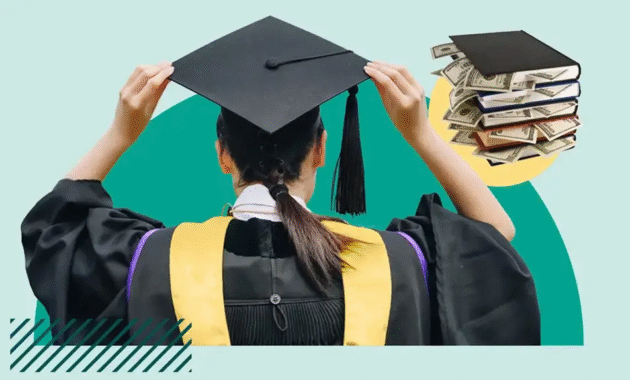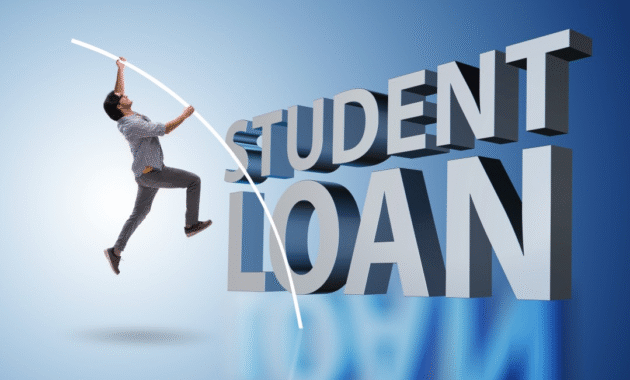Introduction
Paying for college has become a significant financial challenge, and for many students, loans are the only viable solution. With tuition fees on the rise and living expenses increasing year by year, student loans help bridge the gap between educational aspirations and financial reality. However, like any financial decision, borrowing money comes with both benefits and drawbacks. In this article, we will explore the pros and cons of loans for students, discuss various types of student loans, repayment strategies, and provide actionable tips to make informed borrowing decisions.
Understanding Loans for Students
What Are Student Loans?

Student loans are financial products specifically designed to help students pay for post-secondary education and associated expenses. These loans are typically offered by the federal government or private financial institutions.
Types of Student Loans
Federal Student Loans
Offered by the U.S. Department of Education, federal loans usually have lower interest rates and more borrower-friendly terms.
- Direct Subsidized Loans – Based on financial need; the government pays the interest while the student is in school.
- Direct Unsubsidized Loans – Not based on financial need; interest accrues while the student is in school.
- PLUS Loans – Available to graduate students and parents of undergraduates.
- Perkins Loans – Previously offered to students with exceptional financial need (phased out but still repaid by some).
Private Student Loans
Issued by banks, credit unions, or online lenders, these loans often depend on the borrower’s or co-signer’s credit score and have variable or fixed interest rates.
The Pros of Student Loans
1. Makes Education Accessible
Student loans enable millions of individuals to pursue higher education who might otherwise be unable to afford it.
- Access to Quality Institutions – Loans allow students to attend top-tier colleges and universities.
- Empowering Low-Income Families – They help bridge financial gaps, especially for families lacking savings.
2. Lower Interest Rates on Federal Loans
Compared to most other loan types, federal student loans offer competitive interest rates.
- Fixed Interest Rates – These ensure predictable monthly payments.
- Subsidized Options – Government pays interest on subsidized loans while in school, reducing debt burden.
3. Flexible Repayment Terms
Federal loans offer a variety of repayment options to suit borrowers’ financial circumstances.
- Income-Driven Repayment Plans – Monthly payments based on income and family size.
- Loan Forgiveness Programs – Public Service Loan Forgiveness (PSLF) and Teacher Loan Forgiveness.
4. Build Credit History
Making on-time payments can help students establish a positive credit history early in life, which is beneficial for future borrowing such as auto loans or mortgages.
5. Deferred Payments While in School
Most student loans allow students to defer payments until after graduation, reducing financial pressure during study years.
The Cons of Student Loans
1. Accumulation of Debt
One of the most significant downsides is the potential to accumulate tens of thousands of dollars in debt before even starting a career.
- Student Loan Crisis – The U.S. student loan debt exceeded $1.7 trillion in 2024.
- Delayed Life Goals – High debt loads can delay homeownership, savings, and starting a family.
2. Interest Accrual
Interest on unsubsidized and private loans continues to accrue even while the student is still in school.
- Compounding Interest – Increases the total repayment amount significantly.
- Capitalized Interest – Unpaid interest can be added to the principal, increasing the debt load.
3. No Guarantees of Employment

Taking on debt doesn’t guarantee a job after graduation.
- Field-Specific Challenges – Some degrees may not lead to high-paying jobs, making repayment difficult.
- Underemployment – Graduates often start in jobs that don’t require a degree or pay modest wages.
4. Complex Repayment Options
While federal loans offer many repayment options, understanding them can be confusing.
- Multiple Plans – Income-Based Repayment, Pay As You Earn, Revised Pay As You Earn, etc.
- Loan Servicer Errors – Mismanagement by servicers can lead to issues with forgiveness and payment processing.
5. Private Loan Limitations
Private loans offer fewer protections and benefits compared to federal loans.
- Credit-Based Approval – Students may need a co-signer.
- No Forgiveness Options – Private lenders do not offer loan forgiveness.
- Less Flexible Repayment – Fewer repayment and deferment options.
Smart Borrowing Strategies
Borrow Only What You Need
Students should carefully calculate tuition, living expenses, and personal costs to avoid borrowing more than necessary.
Explore All Financial Aid First
Before taking out loans, maximize free money.
- Grants and Scholarships – Apply for federal and institutional grants and scholarships.
- Work-Study Programs – Part-time jobs offered through your school can reduce reliance on loans.
Consider Federal Loans First
They generally offer better interest rates, more flexible terms, and access to forgiveness and deferment.
Understand the Repayment Terms
Every loan has different repayment options, interest rates, and deferment rules.
- Know When Repayment Starts – Typically six months after graduation (for federal loans).
- Track Interest Accrual – Monitor how much is building up over time.
Use a Loan Calculator
Estimate your total loan cost, interest, and monthly payments using online student loan calculators to plan ahead.
Repaying Student Loans
Start Paying Early if Possible
Even small payments while in school can reduce long-term interest costs.
Choose the Right Repayment Plan
Options range from the standard 10-year plan to income-driven plans.
- Graduated Repayment – Payments start low and increase over time.
- Extended Repayment – Lower monthly payments over a longer period (up to 25 years).
- Income-Driven Plans – Adjust payments based on earnings.
Automate Your Payments
Enroll in auto-debit to ensure on-time payments and possibly qualify for interest rate reductions.
Consider Refinancing
Graduates with strong credit or a stable job may refinance to get lower interest rates on private loans.
- Pros – Lower monthly payments, reduced interest.
- Cons – Loss of federal loan benefits if federal loans are refinanced with private lenders.
The Future of Student Loans

As the cost of higher education continues to rise, reforms in the student loan system are a hot topic.
- Loan Forgiveness Proposals – Continued debates in Congress could lead to broader forgiveness options.
- Income Share Agreements (ISAs) – Some schools offer alternatives where repayment is based on post-grad income.
- Education-as-a-Service Models – Emerging financial models may provide students more flexibility and less debt.
Also Read : Top Working Capital Management Techniques For Financial Stability
Conclusion
Student loans are a powerful tool for financing higher education, but they come with serious responsibilities. Understanding the advantages—like access to education and flexible repayment—and the disadvantages—like debt burden and interest accumulation—is crucial. With careful planning, responsible borrowing, and informed decision-making, students can use loans wisely to achieve their academic and career goals without compromising their financial future.
FAQs
What is the difference between federal and private student loans?
Federal loans are issued by the government and often offer lower interest rates and more flexible repayment options. Private loans are offered by banks or credit unions and usually depend on creditworthiness, often lacking the benefits of federal loans.
Can I get a student loan without a co-signer?
Yes, most federal loans do not require a co-signer. Private loans often require one, especially if the borrower lacks credit history.
When do I start repaying my student loans?
Repayment typically begins six months after graduation or dropping below half-time enrollment for federal loans. Private loans may have different terms.
Are there ways to get student loans forgiven?
Yes, federal loans may qualify for forgiveness programs such as Public Service Loan Forgiveness or Teacher Loan Forgiveness. Private loans do not usually offer forgiveness.
Should I pay off my student loans early?
If you can afford it, paying early can save money on interest. However, ensure it doesn’t hinder other financial goals like building an emergency fund or retirement savings.




